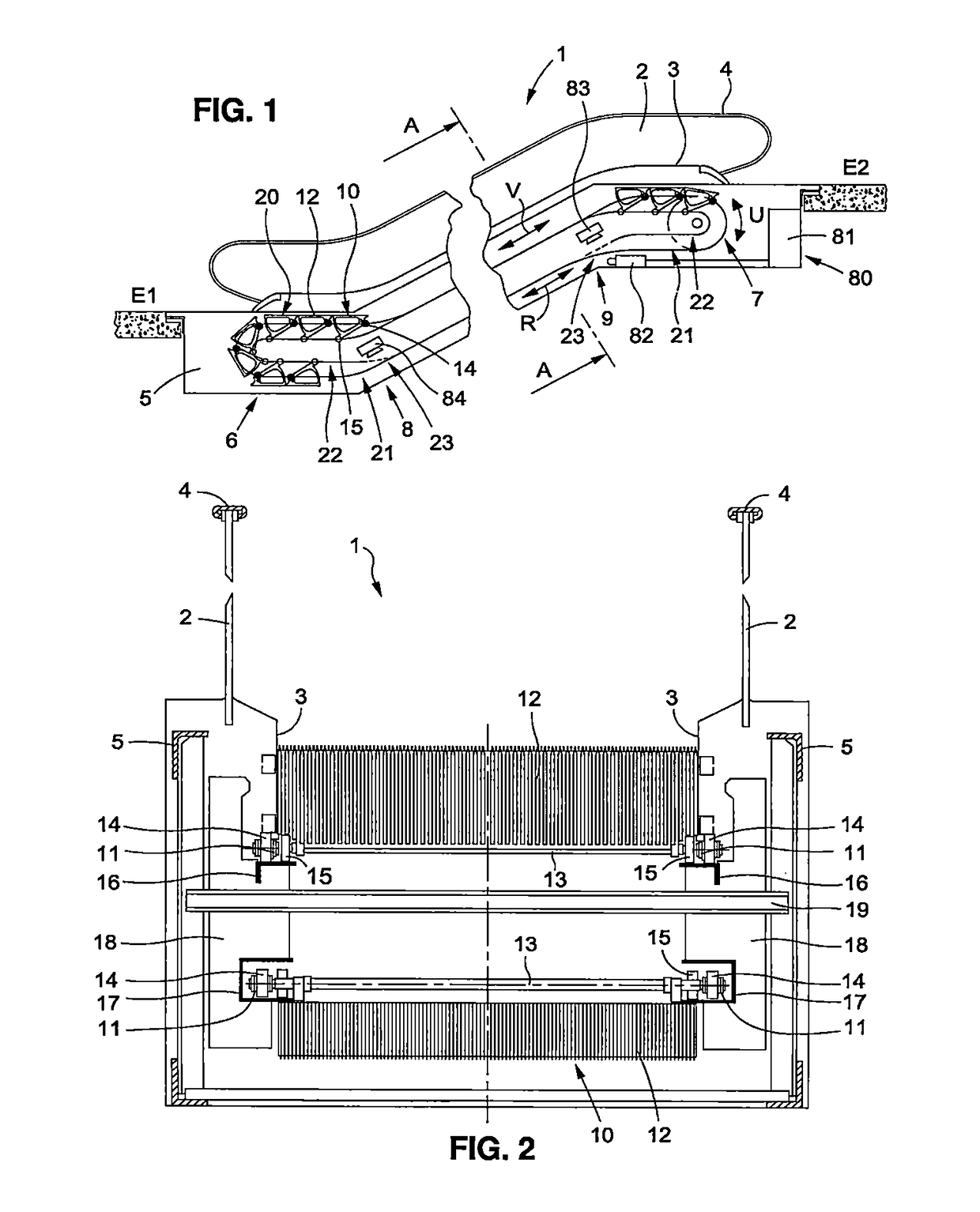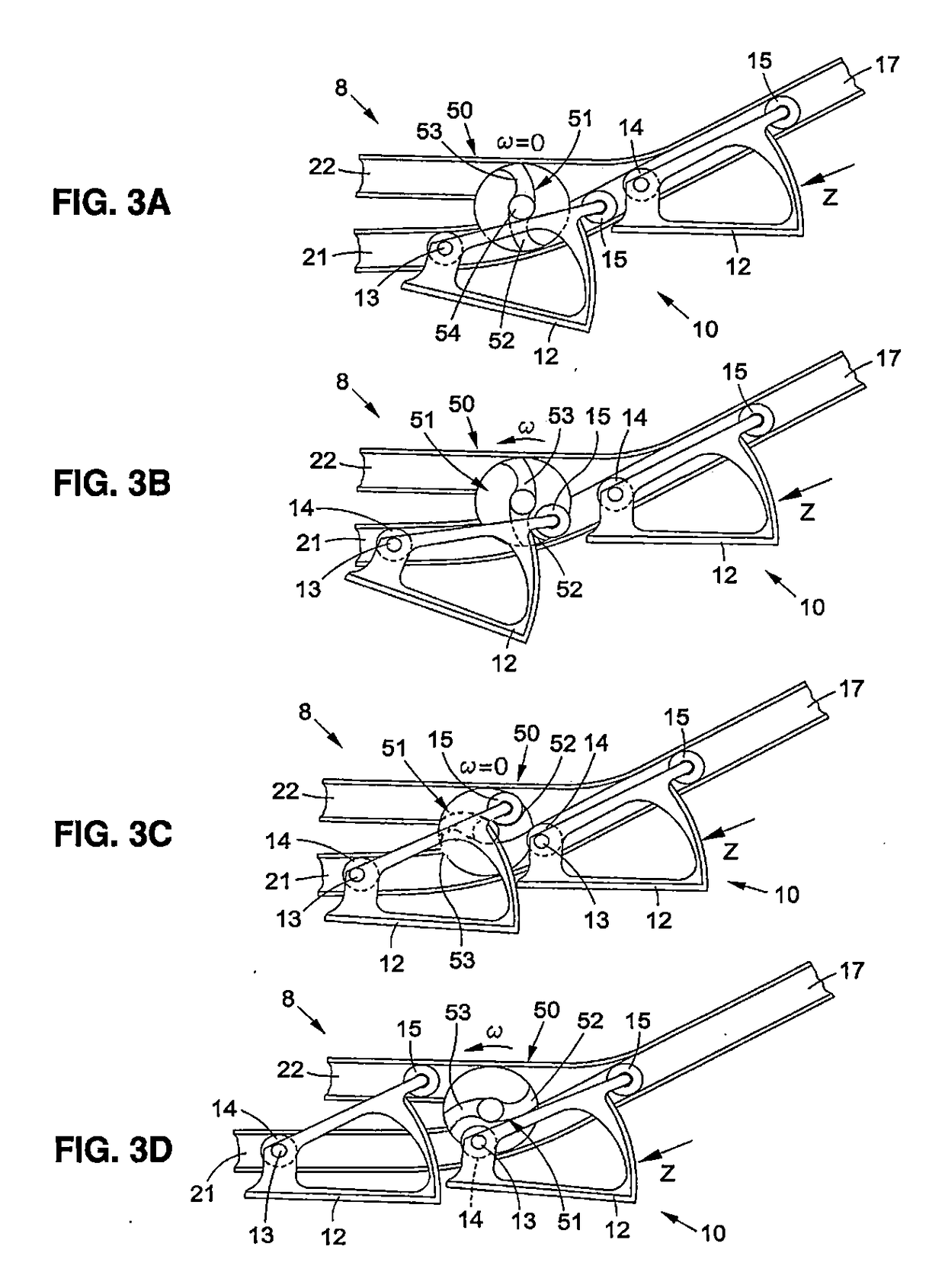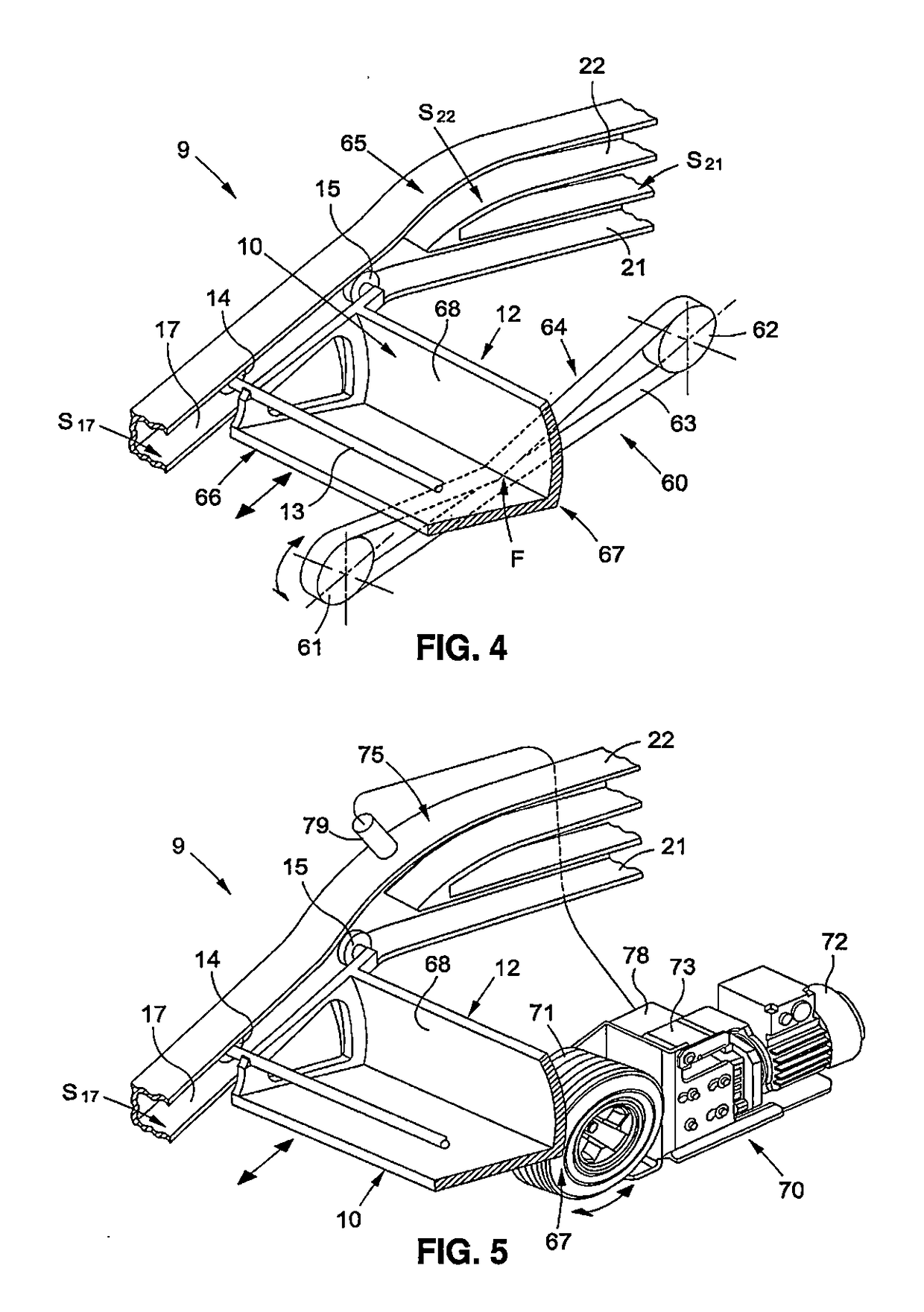Escalator having common return rails
a technology of return rails and escalators, which is applied in the direction of escalators, transportation and packaging, etc., can solve the problems of long assembly time of escalators, high material costs for attaching materials, and the inability to create attachment locations on structural parts of escalators, etc., and achieve the effect of cost-effectiveness
- Summary
- Abstract
- Description
- Claims
- Application Information
AI Technical Summary
Benefits of technology
Problems solved by technology
Method used
Image
Examples
Embodiment Construction
[0032]FIGS. 1 and 2 provide a schematic representation of an elevator 1 comprising a support structure 5 or truss 5 and two deflection regions 6, 7. The escalator 1 connects a first level E1 with a second level E2. A circulating step belt 10 is arranged in the support structure 5. The step belt 10 is bordered on the side by two balustrade bases 3 that extend in the longitudinal direction of the escalator 1 between the first level E1 and the second level E2. In addition, one circulating handrail 4 for each balustrade 2 is arranged on the balustrade base 3. The step belt 10 has at least one traction means 11 and a plurality of steps 12. Because of the circulating arrangement of the step belt 10, there is a forward run V used to convey persons and goods and a return run R used to return the steps 12.
[0033]The step belt 10 depicted in greater detail in FIG. 2 has one traction means 11, embodied as a link chain, on each side. Naturally, other traction means 11 such as, for example, belts...
PUM
 Login to View More
Login to View More Abstract
Description
Claims
Application Information
 Login to View More
Login to View More - R&D
- Intellectual Property
- Life Sciences
- Materials
- Tech Scout
- Unparalleled Data Quality
- Higher Quality Content
- 60% Fewer Hallucinations
Browse by: Latest US Patents, China's latest patents, Technical Efficacy Thesaurus, Application Domain, Technology Topic, Popular Technical Reports.
© 2025 PatSnap. All rights reserved.Legal|Privacy policy|Modern Slavery Act Transparency Statement|Sitemap|About US| Contact US: help@patsnap.com



